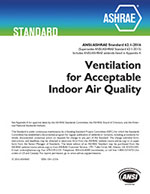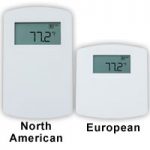 As buildings continue to become more and more energy efficient, we continue to see updates and recommendations to building designs. For example, ASHRAE recently published an update to Standard 62.1 Ventilation for Acceptable Indoor Air Quality that covers changes to how we monitor and control humidity in occupied spaces.
As buildings continue to become more and more energy efficient, we continue to see updates and recommendations to building designs. For example, ASHRAE recently published an update to Standard 62.1 Ventilation for Acceptable Indoor Air Quality that covers changes to how we monitor and control humidity in occupied spaces.
To better understand why these humidity monitoring recommendations have changed, we need to understand what is occurring in our buildings. In HVAC technician terms, this involves the sensible heat ratio change (SHR) or sensible energy (dry bulb temperature) over latent energy (moisture held in air). As technology has advanced, building sensible energy ratios have changed due to improvements in lighting or construction materials, which have led to improved energy efficiency. We have also seen these new materials help to make a tighter building envelope, leading to a need for bringing in more fresh air to meet fresh air requirements around carbon dioxide.
These improvements lead to two negative scenarios:
- Less demand on HVAC equipment to reduce the sensible energy (dry bulb temperature)
- Shorter equipment run times from a tighter building envelope, while also bringing in additional fresh air to meet air change and carbon dioxide requirements
 When buildings were less energy efficient, HVAC equipment would typically have to run for longer periods of time in order to maintain dry bulb temperatures; this not only helped to reduce the indoor temperature but also remove humidity from the air. As buildings became more efficient, this equipment developed shorter run times, which in turn caused a loss in the removal of humidity. These changes have led to new problems around mold and moisture in buildings today.
When buildings were less energy efficient, HVAC equipment would typically have to run for longer periods of time in order to maintain dry bulb temperatures; this not only helped to reduce the indoor temperature but also remove humidity from the air. As buildings became more efficient, this equipment developed shorter run times, which in turn caused a loss in the removal of humidity. These changes have led to new problems around mold and moisture in buildings today.
We are now starting to see dew point become the preferred gauge of comfort. This is because relative humidity is much more variable to temperature and will actually decrease as temperatures rise. As air is heated, its ability to hold water vapor doubles with about every 11 degree increase in temperature. For example, if air starts at 100% relative humidity at 60 degrees and is then heated to 93 degrees, the relative humidity will decrease to approximately 33% however, the dew point will remain at 60 degrees.

The advantages to measuring dew point are twofold, as it:
- Is only dependent on the amount of moisture in the air
- Provides HVAC technicians with a better understanding of how much moisture is in the air and how comfortable the space is
To learn about the air quality products that Dwyer offers, including our humidity, temperature, and dew point transmitters, please visit our website.
